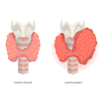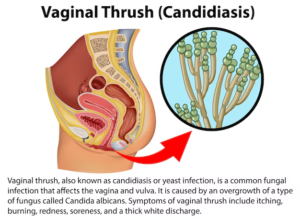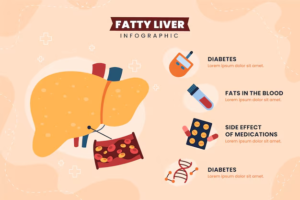Understanding Vibration White Finger: A Comprehensive Overview and Ayurvedic Perspectives
Introduction
Understanding Vibration White Finger: A Comprehensive Overview and Ayurvedic Perspectives, also known as Hand-Arm Vibration Syndrome (HAVS), is a condition caused by prolonged exposure to hand-arm vibrations, commonly from the use of power tools and machinery. This condition affects blood vessels, nerves, and joints in the fingers and hands, leading to a range of symptoms including pain, numbness, and a distinctive whitening of the fingers. As the workforce increasingly relies on vibrating tools, understanding VWF and exploring holistic treatment options such as Ayurveda becomes essential.
Symptoms of Vibration White Finger
The symptoms of VWF typically develop gradually and may include:
- Numbness and tingling: A common initial symptom, often experienced in cold weather.
- White fingers: Episodes where one or more fingers turn pale or white, especially in cold conditions or under stress.
- Pain: Affected individuals may experience pain in the fingers, hands, or wrists.
- Loss of dexterity: Difficulty in gripping objects or performing fine motor tasks.
- Sensitivity to cold: An increased sensitivity to cold temperatures, often exacerbating other symptoms.
These symptoms can significantly impair an individual’s quality of life, making early detection and intervention crucial.
Causes and Risk Factors

VWF is primarily caused by repetitive exposure to hand-arm vibrations. Factors contributing to the risk of developing VWF include:
- Duration of exposure: The longer an individual is exposed to vibrating tools, the higher the risk.
- Intensity of vibration: Higher intensity vibrations can lead to quicker onset of symptoms.
- Cold weather: Cold conditions can exacerbate symptoms, as blood flow to the extremities is reduced.
- Individual susceptibility: Some individuals may be more prone to developing VWF due to genetic or pre-existing health conditions.
Diagnosis
Diagnosis of VWF typically involves:
- Medical history: Discussion of symptoms, occupational exposure, and duration of vibration exposure.
- Physical examination: Assessment of blood flow and nerve function in the fingers.
- Cold provocation tests: Observing the response of the fingers to cold exposure can help confirm the diagnosis.
Conventional Treatment Approaches
While there is no cure for VWF, various treatment approaches aim to manage symptoms and prevent further progression:
- Avoiding exposure: The most effective way to prevent VWF is to limit exposure to vibrating tools.
- Physical therapy: Exercises to improve circulation and strengthen muscles in the hands and arms.
- Medications: Non-steroidal anti-inflammatory drugs (NSAIDs) may be prescribed to alleviate pain and inflammation.
- Surgical options: In severe cases, surgical interventions may be necessary to restore blood flow or relieve nerve compression.
Ayurvedic Perspective on Vibration White Finger
Ayurveda, the ancient Indian system of medicine, emphasizes a holistic approach to health, focusing on balancing the body, mind, and spirit. In Ayurveda, VWF can be understood through the lens of imbalances in the body’s doshas—Vata, Pitta, and Kapha.
Dosha Imbalance and VWF
- Vata Dosha: Characterized by movement and circulation, an imbalance in Vata can lead to symptoms such as numbness, tingling, and poor circulation, all of which are prominent in VWF.
- Pitta Dosha: Associated with heat and inflammation, an imbalance may contribute to pain and discomfort.
- Kapha Dosha: Involved in structure and stability, a Kapha imbalance may lead to stiffness and reduced mobility in the hands.
Ayurvedic Treatment Strategies
Ayurvedic treatments for VWF focus on restoring balance among the doshas and promoting overall well-being. Key strategies include:
1. Dietary Modifications
Ayurveda emphasizes the importance of a balanced diet tailored to individual constitution and imbalances. For VWF, the following dietary recommendations can be beneficial:
- Warm, nourishing foods: Incorporate warm, cooked foods that are easy to digest, such as soups, stews, and warm spices like ginger and turmeric, which can help improve circulation.
- Hydration: Ensure adequate water intake to maintain hydration, particularly in colder environments.
- Avoiding cold foods: Minimize the consumption of cold and raw foods, as they can aggravate Vata and reduce circulation.
2. Herbal Remedies
Several Ayurvedic herbs may help alleviate symptoms of VWF:
- Ginger: Known for its anti-inflammatory properties, ginger can improve circulation and reduce pain.
- Turmeric: Contains curcumin, which has anti-inflammatory effects and may help reduce swelling and discomfort.
- Ashwagandha: An adaptogen that supports overall vitality and helps combat stress, which may exacerbate VWF symptoms.
- Guggulu: This resin is believed to improve circulation and reduce inflammation, making it beneficial for those with VWF.
3. Lifestyle Adjustments
Ayurveda also emphasizes the importance of a balanced lifestyle to support healing and prevention:
- Gentle exercise: Engage in regular, gentle exercises like yoga or tai chi, which can improve circulation and flexibility in the hands and arms.
- Stress management: Incorporate mindfulness practices such as meditation and deep breathing exercises to reduce stress, which can exacerbate symptoms.
- Warm oil massages: Regularly massaging the hands and arms with warm oils like sesame or mustard oil can help improve circulation and relieve tension.
4. Panchakarma Therapy
Panchakarma, a key aspect of Ayurvedic treatment, involves detoxification and rejuvenation. This can be particularly beneficial for individuals with VWF:
- Abhyanga (oil massage): Regular oil massages can help nourish the tissues and improve circulation.
- Swedana (herbal steam therapy): This therapy helps to relax muscles and enhance blood flow.
- Basti (medicated enema): This treatment can help in detoxifying and balancing the doshas.
Conclusion
Understanding Vibration White Finger: A Comprehensive Overview and Ayurvedic Perspectives is a significant concern for those exposed to vibrating tools, and understanding both conventional and alternative treatment options is essential. Ayurveda offers a holistic approach that focuses on restoring balance and promoting overall health. By integrating dietary changes, herbal remedies, lifestyle adjustments, and therapies like Panchakarma, individuals can find relief from VWF symptoms and enhance their quality of life.
Understanding Vibration White Finger: A Comprehensive Overview and Ayurvedic Perspectives as always, it is crucial for individuals experiencing symptoms of VWF to consult with healthcare professionals for proper diagnosis and personalized treatment plans. Embracing a multifaceted approach can lead to better management of this condition and improved well-being overall.








Leave a reply